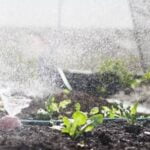Are you interested in learning how to grow watermelons in your vegetable garden? Watermelons are a delicious and refreshing summer treat, and with the right know-how, you can successfully grow them in your own backyard. In this article, we’ll provide you with valuable insights into choosing the perfect watermelon variety for your garden and offer essential tips for optimal growth and bountiful harvests.
When it comes to growing watermelons, selecting the right variety is crucial for success. Whether you want a large, juicy melon for slicing or a smaller, compact variety for limited space, understanding the different types of watermelons available will help you make an informed decision for your vegetable garden. In this section, we’ll discuss the factors to consider when choosing a watermelon variety, such as size, flavor, and disease resistance.
Once you’ve chosen the ideal watermelon variety for your garden, the next step is finding the perfect location to plant them. The success of your watermelon crop depends on providing them with proper sunlight, good air circulation, and well-drained soil. We’ll guide you through the process of selecting an optimal location that will promote healthy growth and abundant fruit production. Stay tuned to learn more about starting your journey as a successful watermelon gardener.
Selecting the Perfect Location for Your Watermelon Garden
When it comes to growing watermelons in your vegetable garden, one of the most important factors to consider is choosing the perfect location for your watermelon garden. Here are some key points to keep in mind when selecting the right spot for your watermelon plants:
- Sunlight: Watermelons thrive in full sunlight, so it’s crucial to choose a location that receives at least 6-8 hours of direct sunlight each day. Without adequate sunlight, your watermelon plants may produce fewer fruits or fruits that are smaller in size.
- Soil drainage: Watermelons prefer well-draining soil to prevent waterlogged roots, which can lead to rot and other diseases. Be sure to select a location with good soil drainage to ensure the health and vitality of your watermelon plants.
- Space: Watermelon vines need plenty of space to spread out as they grow. When choosing a location for your watermelon garden, make sure there is ample space for the vines to sprawl without overcrowding other plants or structures.
Once you’ve found the perfect location for your watermelon garden, you’ll be setting yourself up for success in growing healthy and abundant watermelon crops. By taking into account these key factors when selecting a spot for your watermelon plants, you can help ensure optimal growth and fruit production throughout the growing season.
Remember that selecting the perfect location is just the first step in successful watermelon gardening. By providing your plants with optimal growing conditions from the start, you’ll be on your way to enjoying delicious homegrown watermelons in no time.
Preparing the Soil for Optimal Watermelon Growth
When preparing the soil for optimal watermelon growth, it is important to ensure that the soil is well-draining and nutrient-rich. Watermelons thrive in loamy soil with a pH level between 6.0 and 7.0. Conduct a soil test to determine the pH level of your garden soil and make any necessary amendments to bring it within the ideal range. Adding organic matter such as compost or well-rotted manure can help improve soil structure and fertility.
In addition to amending the soil, it is crucial to ensure that it is properly tilled before planting watermelon seeds or seedlings. Tilling the soil helps break up clumps, improves aeration, and creates a loose texture that allows watermelon roots to penetrate easily. Aim to till the soil to a depth of at least 8-10 inches to provide ample space for root development.
Furthermore, consider applying a balanced fertilizer according to the recommendations from a local agricultural extension service or garden center. Watermelons have high nutritional requirements, particularly for phosphorus and potassium. Incorporating a slow-release fertilizer into the soil before planting can provide essential nutrients throughout the growing season.
| Aspect | Recommendation |
|---|---|
| Soil pH | 0-7.0; amend if necessary |
| Soil Texture | Loamy, well-draining |
| Tilling Depth | 8-10 inches deep |
| Fertilizer | Apply balanced fertilizer before planting |
Planting Watermelon Seeds or Seedlings
Planting Watermelon Seeds
When planting watermelon seeds, it’s important to choose a variety that is suitable for your climate and growing conditions. Begin by preparing the soil in your garden bed by adding compost or well-rotted manure to provide essential nutrients for the growing plants. Watermelon seeds should be planted about 1 inch deep and spaced 2-3 feet apart in rows, with 6-8 feet between rows to allow for ample vine growth.
Transplanting Watermelon Seedlings
For gardeners who prefer to start their watermelon plants from seedlings, it’s important to transplant them carefully into the prepared garden bed. Harden off your seedlings by gradually exposing them to outdoor conditions before transplanting. Dig a hole and carefully place each seedling in the ground, making sure to gently firm the soil around the base of the plant.
Providing Adequate Support
As watermelon plants grow, they will produce sprawling vines that can take up a significant amount of space in your garden. Consider using trellises or other support structures to keep the vines off the ground and promote better air circulation around the plants. This can also help prevent diseases and make it easier to harvest ripe watermelons.
By following these tips for planting watermelon seeds or seedlings, you can set the stage for a successful harvest of delicious homegrown watermelons in your vegetable garden. Pay close attention to watering and fertilizing techniques as well as any pests or diseases that may affect your plants as they grow. With proper care, you can enjoy a bountiful crop of juicy watermelons at harvest time.
Proper Watering and Fertilizing Techniques for Healthy Watermelon Plants
Watermelons require consistent watering to thrive, especially during hot and dry weather. It is important to water the plants deeply, ensuring that the soil is evenly moist but not waterlogged. The best time to water watermelon plants is in the morning, as wet foliage overnight can contribute to diseases. Additionally, using a soaker hose or drip irrigation system can provide the consistent moisture that watermelons need without causing water to splash on the leaves.
When it comes to fertilizing watermelon plants, it is essential to use a balanced fertilizer that contains nitrogen, phosphorus, and potassium. Before planting, mix organic matter into the soil to provide nutrients for the growing plants. Once the vines start to develop runners, apply a side dressing of fertilizer alongside each plant, making sure not to get any on the leaves or stems. This additional feeding will support healthy growth and fruit development.
Over-fertilization can lead to excessive vine growth at the expense of fruit production, so it’s important to follow recommended guidelines for fertilizing watermelon plants. Using a soil test kit can help determine if any specific nutrients are lacking in your garden soil, allowing you to adjust your fertilization plan accordingly.
| Watermelon Care Tips | Details |
|---|---|
| Watering | Consistent deep watering in the morning; avoid wet foliage overnight. |
| Fertilizing | Use balanced fertilizer before planting and side dressing during vine development. |
| Soil Testing | Utilize soil test kits to determine nutrient deficiencies in garden soil. |
Managing Pests and Diseases That Can Affect Watermelon Plants
Watermelon plants, like any other vegetable or fruit plants, are susceptible to pests and diseases that can affect their growth and fruit production. It is important for gardeners to be proactive in managing these potential issues to ensure a successful harvest of homegrown watermelons.
Here are some tips for managing pests and diseases that can affect watermelon plants:
- Identify common pests and diseases: Familiarize yourself with the common pests and diseases that can affect watermelon plants, such as aphids, cucumber beetles, powdery mildew, and fusarium wilt. Knowing what signs to look for can help you take action before the problem becomes severe.
- Implement cultural controls: Practice good gardening techniques such as crop rotation, proper spacing between plants, and adequate air circulation to reduce the risk of pest infestations and disease outbreaks. This can help create an environment that is less conducive to the spread of pests and diseases.
- Use organic pest control methods: Consider using natural predators or organic insecticides to manage pest populations in your watermelon garden. Beneficial insects like ladybugs and lacewings can be introduced to prey on aphids and other harmful insects, while organic insecticidal soaps or neem oil can be used to control pest infestations.
- Monitor for signs of trouble: Regularly inspect your watermelon plants for any signs of pest damage or disease symptoms. Early detection allows for prompt action, whether it’s handpicking troublesome insects or removing affected plant parts to prevent the spread of disease.
By being vigilant in managing pests and diseases that can affect watermelon plants, you can help promote healthy growth and maximize your chances of a bountiful harvest of delicious homegrown watermelons.
Pruning and Trellising Watermelon Vines for Better Fruit Production
Why Prune and Trellis Watermelon Vines
Pruning and trellising watermelon vines may seem unnecessary, but it can actually lead to better fruit production. By pruning the vines, you can encourage the plant to put more of its energy into growing larger, sweeter fruits rather than producing an abundance of smaller ones. Additionally, trellising the vines can help save space in your garden and prevent the fruits from rotting on the ground.
When to Prune and Trellis
It’s important to start pruning and trellising your watermelon plants once they start to develop several true leaves. This is usually when the plants are about 2-3 feet long. At this point, you can begin training the vines onto a trellis and removing any excess foliage. Regularly check for new growth and continue to prune as necessary throughout the growing season.
How to Prune and Trellis
To prune your watermelon vines, carefully snip off any small side shoots that develop along the main stem. These side shoots divert energy away from fruit production, so removing them will direct more nutrients to the developing fruits.
When it comes to trellising, you can use a simple system of stakes or netting to support the vines as they grow. Be sure to tie up any heavy fruits with soft twine or fabric strips to prevent them from pulling down on the vine.
Following these tips for pruning and trellising your watermelon plants can lead to healthier vines and bigger, juicier fruits at harvest time.
Harvesting and Storing Your Homegrown Watermelons
After all the hard work of choosing the right variety, selecting the perfect location, preparing the soil, planting, and nurturing your watermelon plants, it’s finally time to harvest your homegrown watermelons. The best way to know when it’s time to harvest is by paying attention to the tendril near the stem of the watermelon.
When it turns brown and dries up, this is a good indication that the watermelon is ready for picking. Additionally, you can also tap on the watermelon with your knuckles – a dull sound indicates ripeness.
Once you’ve determined that your watermelons are ready to be harvested, carefully cut them from the vine using a sharp knife or shears. Be sure to leave a few inches of stem attached to the watermelon as this can help prolong its shelf life. After harvesting, it’s important to store the watermelons properly.
They should be kept in a cool, dry place with good air circulation. If you have several watermelons, avoid stacking them as this can cause bruising and spoilage. With proper storage and handling, your homegrown watermelons can last for several weeks.
To further ensure that your harvested watermelons stay fresh for as long as possible, it’s important to inspect them regularly for signs of decay or spoilage. If you notice any soft spots or unusual discoloration, these areas should be cut away immediately before consuming the remaining flesh. By following these simple tips for harvesting and storing your homegrown watermelons, you can enjoy the fruits of your labor well after their initial harvest.
Tips for Success and Troubleshooting Common Issues in Watermelon Gardening
In conclusion, growing watermelons in your vegetable garden can be a rewarding experience if you follow the right steps and techniques. By choosing the right watermelon variety, selecting a suitable location, preparing the soil, and properly planting the seeds or seedlings, you can set the stage for successful watermelon growth. It is important to also pay attention to proper watering and fertilizing techniques to ensure healthy plants.
Additionally, managing pests and diseases that can affect watermelon plants is crucial for a bountiful harvest. Consider implementing pruning and trellising techniques to support the vines and improve fruit production. When it comes time to harvest your homegrown watermelons, be sure to store them properly to maintain their freshness.
As with any gardening endeavor, there may be common issues that arise during the process of growing watermelons. However, by following the tips for success provided in this article, as well as being proactive in troubleshooting any problems that may occur, you can increase your chances of having a successful watermelon harvest. With dedication and care, you can enjoy delicious homegrown watermelons all summer long.
Frequently Asked Questions
What Is the Best Way to Grow Watermelon in the Garden?
The best way to grow watermelon in the garden is to ensure that you have well-drained soil, plenty of sunlight, and space for the vines to spread. It’s important to plant watermelon seeds or seedlings after the danger of frost has passed and to provide consistent watering throughout the growing season.
Additionally, using mulch can help retain moisture and suppress weeds.
What Is the Best Month to Plant Watermelon?
The best month to plant watermelon depends on your climate and location, but generally speaking, it’s best to plant watermelon seeds or seedlings after all danger of frost has passed. In most regions, this means planting in late spring or early summer when the soil temperature is consistently above 70°F (21°C).
This timing allows the watermelon plants to take advantage of the warm summer months for growth.
What Vegetables Can Be Planted With Watermelon?
Watermelon can be planted with certain vegetables that complement its growing requirements and habits. For example, companion plants like corn and radishes can help deter pests that are harmful to watermelons, while also not competing for resources with the sprawling vine growth of watermelon plants.
However, it’s important to avoid planting watermelon with potatoes or other members of the cucurbit family (cucumbers, squash) as they can attract similar pests and diseases.

If you’re looking to get into vegetable gardening, or are just looking for some tips on how to make your current garden better, then you’ve come to the right place! My name is Ethel and I have been gardening for years. In this blog, I’m going to share with you some of my best tips on how to create a successful vegetable garden.





